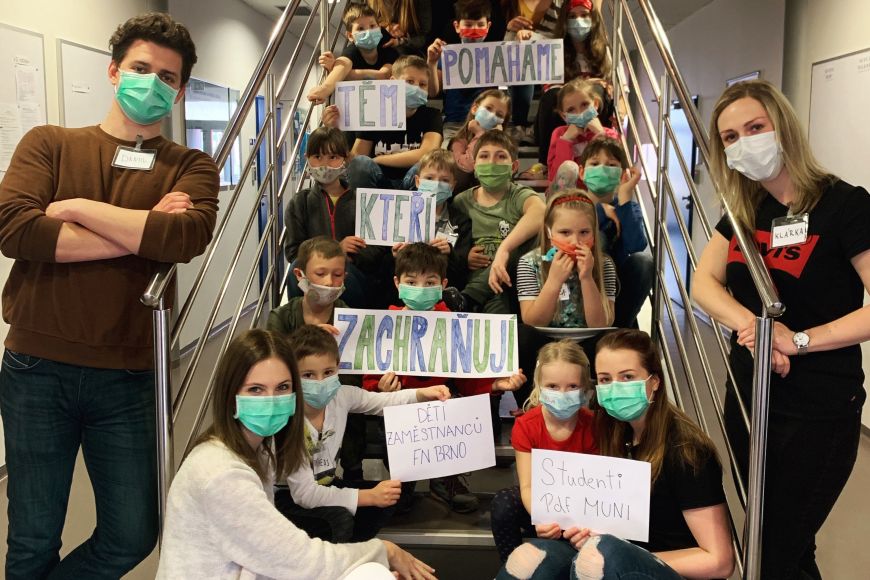Almost 3,000 volunteers, mostly students, have already signed up as part of the university volunteer network to help people affected by the coronavirus outbreak. Among the first to offer help were the students of the MU Faculty of Education, who are now running a childcare centre for health professionals at the University Hospital Brno. For over a week now, they have been planning activities for children whose parents are on the front line of the fight against the pandemic.
Pavlína Malíková is one of those who responded to an e-mail from the dean of the faculty Jiří Němec, who asked students to sign up as volunteers in response to the plea for help from the hospital. “I was happy that I could help. I couldn’t imagine just staying home for weeks on end. I messaged some of my friends and three of us signed up,” she says.
It was only later that she realised that she didn’t know exactly what it was she had signed up for and what would be the reality on the ground. However, she says that in the end, there was nothing to think about. The childcare groups, which resemble afterschool clubs, were established surprisingly quickly and smoothly.
Students of the MU Faculty of Education look after about twenty children divided into three groups. The childcare centre uses the classrooms at the Bohunice campus and runs every day from 6:30 a.m. to 4:30 p.m. The students work in morning and afternoon shifts, with both groups meeting for about 30 minutes around noontime to exchange information.

“The children are between six and twelve and we mostly play with them rather than teach them, although we do help them with their homework,” says Pavlína.
The morning starts with a children’s fairy tale film so that all the children wake up. “Once the class is full, we play a game and then we do homework with those children that were assigned it. Afterwards, it’s time for board games, memory games, crafts and puzzles, and before lunch we go out to the campus grounds so that the children can run around a little.”
On one of these walks, the children made a dance video that has since gone viral on social media. Pavlína found the dance choreography, which explains how to behave at the time of an outbreak, on an Instagram profile called “Pohyb není věda” (“Moving is not rocket science”). As she says, “It shows how people should wash their hands, keep their distance and refrain from touching their face. It seemed like a good way to provide the children with this information,” adding that the choreography accomplished its purpose while entertaining the children at the same time.
Rozcvička v kampusuDo nového týdne to můžete zkusit s rozcvičkou, kterou si zacvičily děti zaměstnanců Fakultní nemocnice Brno spolu s našimi studenty 🤸♀️
Zveřejnil(a) Pedagogická fakulta MU dne Pondělí 23. března 2020
To start the week, try the warm-up presented by the children of the University Hospital Brno employees and our students. “The only difficult thing was explaining to the children that they needed to put their face masks on for all of us to stay healthy. They didn’t like this at first and the adult-size face masks were too big for them. But after we adjusted the masks to fit them, all the children eventually came around to the idea,” says Pavlína with a smile.
As opposed to most schools, the campus groups are made up of children of different ages. There are advantages to this: if you look into one of the classrooms, you might see a ten-year-old helping a six-year-old with their homework. “We don’t discuss the outbreak much. The children’s parents are health professionals, so they are all quite aware of the situation and are behaving responsibly rather than being scared,” thinks Pavlína, who specialises in special education and English.
She does not feel that being among people at this time is dangerous: “Of course, we are a stone’s throw from the hospital but I think it is more important now for us to help the health workers because they are needed the most. I know that some of my classmates backed out of volunteering due to the risk of infection and I can understand their point of view, but the way I see it is that we are needed here.”
There are currently about ten university students rotating on the childcare roster and more are ready to help in other healthcare facilities if needed. Another group of future teachers is running a similar service for the physicians and nurses at St. Anne’s University Hospital.
